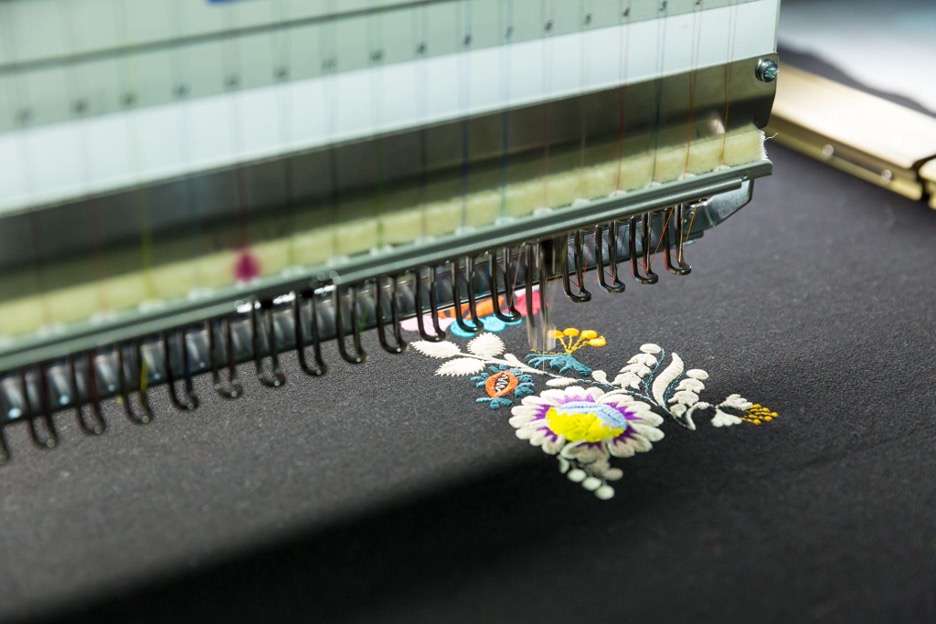The primitive clothing of the early civilization was made up of rough threads that were sewn together with a needle to produce animal skins. Until the 1990s, some places were still only using cotton threads, but technological advancements have now offered a wide selection of synthetic threads that are superior to cotton threads for most purposes.
Physical and fastness attributes are the most typical tests undertaken by producers and consumers to measure the quality of sewing threads. The ‘sewability’ in dynamic conditions is, nevertheless, the most important test for sewing thread. Let’s a look at the common ways to determine thread quality:
Ways to determine thread quality
There are generally two ways to determine thread quality: physical testing and chemical testing. As physical tests are simpler, let’s look at the common methods of the physical threat quality tests:
1. Physical tests
a) Thread count test
In general, the count or number of sewing threads is determined using the ASTM test method for short-length specimens and the skein technique for long-length specimens.
The direct thread numbering method is based on a yarn’s weight per unit length, whereas the indirect system is based on a thread’s length per unit weight. The short-length method involves cutting and weighing specimens of a predetermined length, usually 1m or less, from a conditioned sample that is under controlled strain. The skein method involves winding specified lengths of thread onto reels as skeins and weighing them. The count, also known as the thread number, is then calculated using the mass and length of the thread.
b) Thread diameter test
The diameter of the sewing thread is a critical factor in sewability. It must be proportional to the needle eye’s size. Should the thread width not match the needle eye size, the thread may break during sewing, affecting the seam’s overall look. However, if a thread’s diameter is too big, it displaces the yarn in a fabric, causing the seam to pucker. In most cases, the needle eye is around 40 per cent of the needle’s overall length. To avoid thread fraying during sewing, sewing thread should not take up more than 60 per cent of the eye width.
Because cover is necessary with such threads, sewing thread diameter is also a consideration when choosing sewing thread for embroidery, contrast stitching, or other ornamental applications. As a result, measuring the diameter of a sewing thread is crucial.
c) Thickness gauge method
The thickness gauge method is measured with a standard pressure foot diameter (9.52+0.02mm). The pressure foot and other linked moving parts must be weighted to apply a total force of 1.67+0.03N, which is equivalent to 23.4kPa of pressure.
The thread must be taken from the side of the holder without interrupting the twist in order to measure the diameter. Then, on the anvil, arrange four such strands of thread side by side, approximately halfway between the sides of the thickness gauge’s pressure foot.
The thickness of the thread should next be measured to the nearest 0.02mm and recorded as the diameter of the thread. After extracting at least 300mm of thread from the holder, take ten more readings along the length of the threads to determine the average diameter of the sewing thread.
d) Optical method
In this method, the diameter of the threads is measured using a microscope with a stage that can be moved to bring the thread parallel to the movable crosshair in the eyepiece. The mounting plate, with clip or other means, is used to maintain a consistent tension on the thread that is sufficient to remove any slackness without stretching it.
The thread is extracted from the side of the holder without interrupting the twist before measuring the diameter. The thread is then put on the microscope’s moveable stage with the mounting plate, and the stage revolves until the thread is parallel to the movable crosshair. The difference in micrometre settings when the crosshair is moved from one edge of the thread to the other is used to determine the thread diameter to the nearest 0.02mm.
After removing at least 300mm of thread from the holder, take 20 more readings along the length of the thread to compute the average diameter of the sewing thread.
e) Shrinkage method
The measurement of sewing thread shrinkage is critical because it can create puckering along seams, affecting the seam appearance.
The construction and mass of the seamed fabric, the nature of the seam assembly, or the strain on the sewing thread during sewing are all factors that can influence the effect of sewing thread shrinkage on the seam. The shrinkage testing method is performed after exposures to either dry heat or boiling water.
Simpler ways to determine thread quality
Besides the physical thread tests, there are also simpler ways to determine thread quality. When using these methods, which are more general, you simply need to observe the tested properties accordingly without using any measuring equipment. These tests include:
a) The hairiness test
Sewing thread hairiness is an important quality for its effective and efficient sewing performance. Thread with a high hairiness hinders its smooth passage through the needle eye and other thread paths of a sewing machine, resulting in thread breakage, excessive heat generation, and a variety of other seam problems. The hairiness of sewing thread consisting of staple fibres must be measured. Hairiness is described as the tendency for component fibres to protrude from the yarn’s surface into the atmosphere.
b) The thread friction test
The frictional property of a sewing thread is critical for its effective sewability. Both static and kinetic friction must be regulated; the frictional force must not be too strong, as this could cause thread breakage, nor too low, as this could result in inappropriate thread management and seam slippage.
c) Unevenness and imperfection test
Unevenness refers to a sewing thread’s degree of homogeneity in terms of mass per unit length or diameter. Because the thread is required to pass smoothly through the needle eye and tension discs, uneven yarn might hinder sewing performance. Sewing performance improves when the thread is more consistent, resulting in higher seam quality.
d) Tensile length and elongation test
Because the loop properties, which are the most significant aspects of a sewing thread, are heavily dependent on tensile strength and elongation, measuring strength and elongation is critical. The tensile strength and elongation qualities of a sewing thread also play a big role in seam performance and appearance.
e) Loop and knot strength test
The loop breaking strength of a sewing thread is used to determine its capacity to contribute to seam performance. It is proportional to thread breaking strength and, as a result, seam breaking strength. Along with the stitch and seam type, the number of stitches per inch, and the nature of the material stitched, the loop elongation of a sewing thread is an important characteristic that contributes to the elongation of a seam.
The knot strength of a sewing thread is used to determine how brittle the thread is. The performance of a thread after stitching is shown in knot strength reduction.
f) Abrasion resistance test
During a sewing operation, a sewing thread is prone to abrasion as it passes past the needle eye and other elements of the sewing machine. Sewing threads in garments and other completed goods must be able to tolerate a lot of abrasion while in use. Sewing thread abrasion resistance is thus an extremely essential quality characteristic. Abrasion resistance can be assessed using a variety of techniques.
Conclusion
Although sewing quality accounts for less than 1 per cent of the total mass of a garment, it is quite important in determining the overall quality of your garment and embroidery. Stitching thread must meet very strict quality standards, both throughout the sewing process and during the life of the finished product. The most significant quality requirements for a sewing thread are that it must flow readily through the needle’s little eye; as a result, it must be uniform, knot-free, torque-free, and fault-free.
For more information on thread quality, please don’t hesitate to contact us here. We will be happy to help you with any questions.




